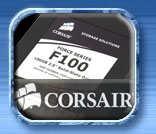Introduction

 Earlier this year when everybody started noticing the 'SandForce' phenomenon in the hardware scene a lot of people shouted 'yay', finally some competition on the SSD IC HOST controller SSD, more ODMs will bring some more competition into a predominantly stiff SSD controller market -- and that's a great thing as emerging companies always have new ideas, driving technology to a new level and prices down.
Earlier this year when everybody started noticing the 'SandForce' phenomenon in the hardware scene a lot of people shouted 'yay', finally some competition on the SSD IC HOST controller SSD, more ODMs will bring some more competition into a predominantly stiff SSD controller market -- and that's a great thing as emerging companies always have new ideas, driving technology to a new level and prices down.
Thus far we have tested a handful of SandForce based products, and though the first series with the initial SF-1500 controller did bite us a little in the toosh, the SF-1200 controller based products where showing really interesting gains in performance. The SandForce based products by all means are not little wonders and miracles in each and every segment, but on some levels they make a distinct difference oppose to JMicron and Indilinx products.
Certainly when it comes to productivity on your PC, that's where the SandForce 1200 products seem to really kick in. We test Corsairs latest offering, and previously we tested OCZ and ADATA's SF1200 products as well.
So today the turn goes to Corsair. Recently they've released the 'Force series' SSD, now you likely do not need more than 2 brains cells to see where the name Force came from, so let's not explain that.
The Force Series of SSDs initially where available in capacities of 100GB and 200GB and support the TRIM command in Windows 7, which helps to maintain optimal performance over the drives lifetime. Corsair very recently also added 60, 120 and 240 GB sized SSDs in the very same Force range.
To fall into clichés, will the Force be strong with this one ? We'll check it all out in a nice review on Corsair's Force F100 SSD. Next page please.

